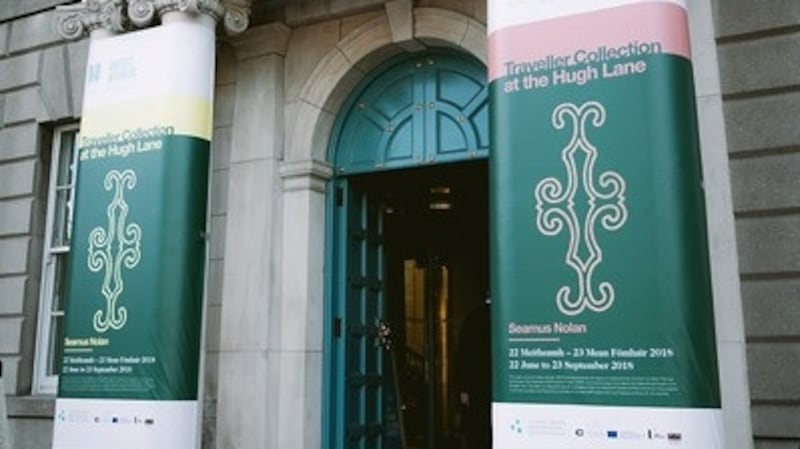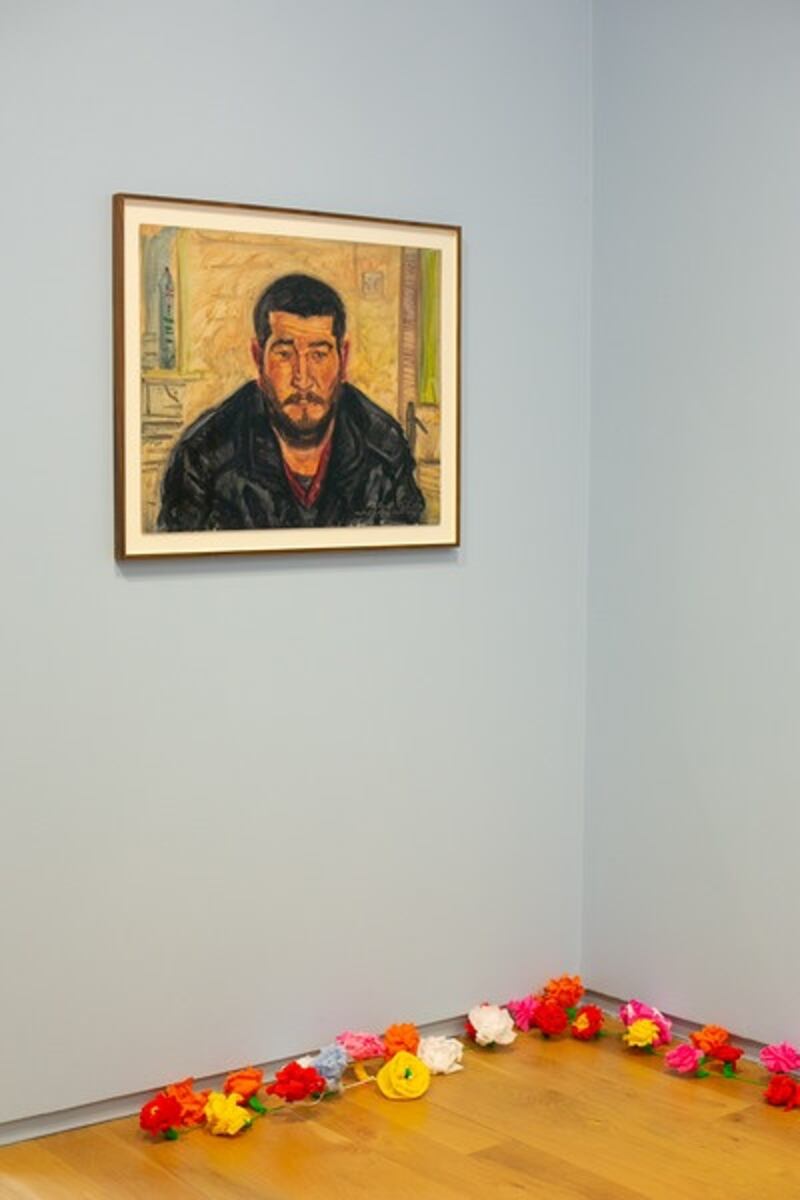My family insisted that this man had potential. They warned me about talking too much and being overly opinionated. The arrangement was for a Sunday afternoon, 3pm, the Merrion Square entrance of the National Gallery.
My companion suggested the third floor, the Yeats room. For a moment, there was an uncomfortable hesitance. We made our way towards the lift. On several occasions my visits to this room invoked a sense of unease. With great enthusiasm my companion produced a library book about these particular paintings. The tinge of blue echoed through. My own viewing of these paintings were of wild coastal scenes, horse races, farmers, card players and local shops. The colloquialisms felt familiar. Yeats is believed to have said that the deep, intense blue was “a colour that always affected him”.
For most of my life, public spaces such as art galleries felt closed off to people like me. An innate feeling of lacking overwhelms me. There are subtle subjective and objective reminders of elitism associated with galleries. However, the paintings are portraits of my people so the kernel of the building, if not the Yeats room, is a contradiction or an emotional oxymoron. Monologues with the words exploitation, voyeurism and misappropriation are tucked into the pit of my belly. My companion is an art historian.

We move separately to either ends of the room. My attention is drawn to the painting entitled The Tinkers' Encampment. The colours, vibrancy, brush work and energy of the piece pulse through me. The abstract marks capture a rawness that inculcates my rage which quickly subsides into nostalgia for my childhood.
Us the Travellers, with an aggravated history and ambiguous connection. A cumulative eclectic, searching for a cultural position to be engaged with. Yet here in this room, the presentation tells us of our integral relationship as Travellers with Irish identity.
Moving from painting to painting, slowly breathing, manoeuvring our way around the room. Furtive smiles with nods towards particular pieces. Sitting in front of one canvas brought me to many places: Sligo, Tullamore and Mayo, where often strangers would stop their cars to take photographs of us. It is said that Yeats’ interpretation of the Travellers is unromanticised. The faces he paints are lived in. They tell a narrative of nomadism.
It’s estimated that Yeats had 24 pieces that depicted Traveller identity. Unlike other painters who made portraits of Travellers, he pushed himself beyond the encampment and propelled his portfolio to include the female and male Traveller form. Slowly moving through Yeats’ family room, more paintings of diverse figures. The clown, the person of small stature and the Tinsmith. Sitting in silence, the chemistry between my companion and the electricity between my body and the paintings creates a complex pressure. Tilting my head, my response is coded. The backdrop of my own narrative also curates the tension between the outside gaze and the inside landscape. The oil paint lends itself to a rich texture that echoes aspects of Traveller ethnicity.

The subtlety of this painter’s work encapsulates the presence and the inflection of authenticity. However, the problematic legacy of misappropriation both politically and ethically brings its own entangled contention. This lies between the artist’s settled identity and the Traveller of the painting’s subject.
His charm is infectious. Studying the painting, cautiously glancing, enquiring. The close proximity of my companion is telling. The conversation about the paintings is full of contradiction. Reticence engulfs me. The composure of my poise becomes unsettled. Turning, moving, attempting to create some distance. The interruption on our familiarity disorientates him. The sudden chasm creates confusion. It makes a new silence. My attention is ignited by the painting’s brashness. Yeats’ women are assertive, in content and form. His intentions come with a discerning invitation. Boldness dares me. Whispering with absolute certainty; “Travellers, Travellers, Travellers”. The word reverberates around the room.
We are both fixated, on the painting entitled Oh, Had I the Wings of a Swallow, which illustrates a young woman singing for her supper, on a train in 1920s Ireland. Rapidly glancing at the painting, then turning towards me. His words: gens du voyage, the French word for Traveller people. A slow smile gathers momentum. We move closer to Yeats' painting. The passion of the Tinker Woman tells me on this occasion there will be no need for explanation or interpretation. We head towards the lift, into the cafe. His library book is opened. Glancing furtively at the images while my companion brings the tea and cake. My agitation remains close, the allegory within Yeats' work concerning Travellers can only be understood by way of honouring his intent.
Oh, Had I the Wings of a Swallow was written by Rosaleen McDonagh, artist and member of Pavee Point Traveller and Roma Centre board of directors, to mark the launch of Seamus Nolan's CAPP commissioned exhibition Traveller Collection, a partnership between Create and Dublin City Gallery the Hugh Lane. The essay is part of the exhibition which also features archival material borrowed from the Special Collections of Ulster University. Traveller Collection is open to the public until September 23rd











